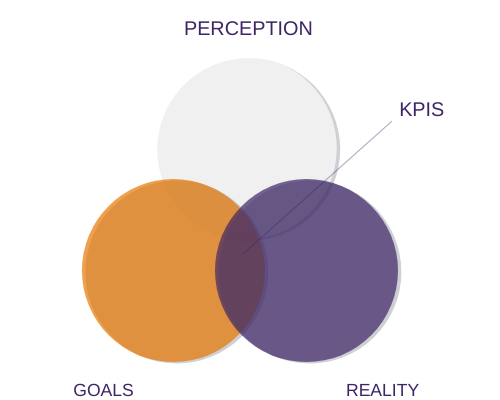Our societies are in the throes of change, the level of expectation of its transformation has never been higher. People as individuals, in all of this are at the heart of everything, and at the same time the sole architects of change. They must take a stand to change the established, invent a future, invent a new society, and their own role within it.
The leader especially, must be all of this within their company, which is made up of a “tribe”, connected to various communities, within an ecosystem, itself highly interconnected. We are living in a tremendous time of change and transformation, which of course is not a long quiet river. In this, we must continue to adapt, to change, to transform. Where are we today?
The subject of “Purpose”
The notion of Purpose is becoming generalised, internal teams often do a remarkable job of analysis within the company, to understand who they are, what they bring, how they contribute. To be able to focus on the essentials and update their “DNA“, amplify the company’s project and organise themselves to deliver it.
Purpose Leadership
We often speak of “thought leadership“, public speaking and exhibiting the leader’s position externally. In fact, Edelman in his latest “Trust Barometer 2021” measures that 86% of CEOs are expected to speak publicly on one or more of the societal challenges.
The leadership qualities of company leaders are measured, and significantly influence the leadership of the company and with a ricochet effect, on the entire ecosystem. (ie: Leadership Purpose Strategy -LPS- model, Thinking Heads)
HRs are extremely focused on aspects of transformation in order to capitalize on the company strengths and attract new talents. This is obviously one of the pillars of the employer’s brand and one of the facets of the corporate image. The goal is achieved when employees become ambassadors for the company, embody the values of the company and naturally deliver this famous raison d’être.
The positioning of the company
It is generally agreed that companies are crumbling under excessive data, which ultimately does not help them achieve a unified vision, allow executives to make decisions, or monitor the effectiveness of policies they have implemented. In particular, these policies often impact issues of image, purpose and leadership, and therefore define the positioning of the company in its corporate dimension.
The corporate image is a very broad concept, which integrates all facets of the business and all of its stakeholders. So, it’s an approach that requires analysing and monitoring different things, which is not the prerogative of a single tool, nor of a single model.
The corporate image requires a 360 ° view, which must integrate:
– Its objectives versus societal expectations.
– The way it is perceived by its ecosystem.
– Its reality, what is said, how its actions are measured.


Which indicators should we focus on?
A recent and extremely promising approach to unify all the concepts previously developed and to measure the real impact of the company is the emergence of ESG (Environmental, Social & Governance) indicators. Stakeholders are more important than shareholders for the long-term success of the company.
ESG criteria
ESG standards allow companies around the world to identify, manage and communicate important extra-financial information on their sustainability, to the eyes of their various stakeholders.
-
Environmental criteria take into account the way in which a company acts as a steward of nature.
-
Social criteria examine how it manages relationships with employees, suppliers, customers and the communities in which it operates.
-
Governance concerns the type of management of the company, its ethical behaviour, its transparency, executive compensation, audits, internal controls and shareholders’ rights.
To date, there is a wide variety of ESG indicators, which are not yet unified. The United Nations has developed the Sustainable Development Goals (17 SDGs), The Sustainability Accounting Standards Board (SASB), its 26 Indicators and many other bodies also follow the list.


If ESG indicators become, for informed investors, a tool to select companies in which to invest in a sustainable and perennial way, they become de facto, a relevant tool in order to assess oneself, differentiate oneself and communicate to display one’s values. In a specific, real way and not just in a declarative way.
Larry Fink (CEO of BlackRock) in his 2021 letter to CEOs, urges them to publish their extra-financial reports using these ESG indicators, including SASB. He notes in particular a tremendous progression during the year 2020 (363%) as more than 1,700 companies that have done it in detail.
ESG indicators will therefore allow companies to be objective, to measure what they are doing and to have key comparison indicators. They complement all financial standards as part of their usual publications and fit easily into materiality studies, which will expand the subject.
Conclusion
Image, reputation, materiality studies, so many different subjects that contribute to a global vision of the company. It is more than necessary to make this 360° view of the corporate image through the prisms of Objectives/Perceptions/Realities, which must be crossed with the expectations of the business ecosystem.
ESG indicators will ultimately represent this DNA of the company by objectifying its contribution.Today, it can be said quite bluntly, that a company that has an established and efficient product or service must base its reputation and its attractiveness on all the other facets of the company.
Want to know more? Click here to check the full version of this article.
Click here to learn more examples from the UK market.
Click here to learn more examples from the French market.
CONTACT US
Madrid - España
+(34) 91 310 77 40
Miami - Estados Unidos
+1 (305) 424 13 20

